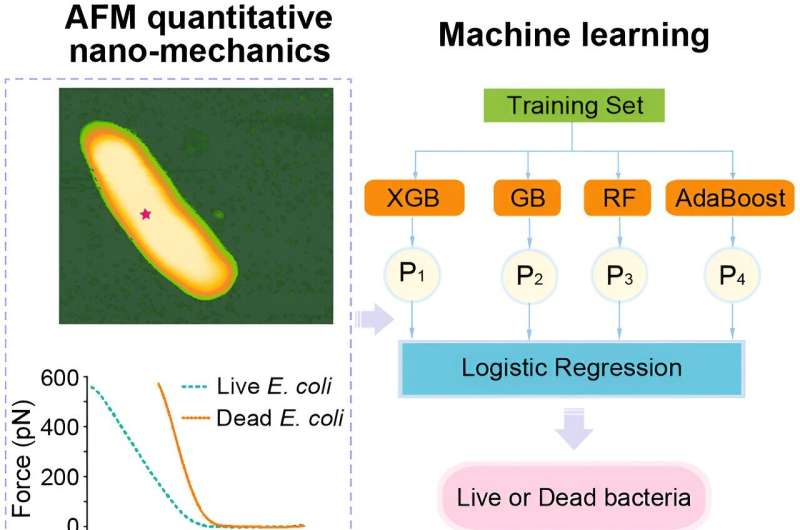Credit: Cell Reports Physical Science (2024). DOI: 10.1016/j.xcrp.2024.101902
Prof. Guo Shifeng's team at the Shenzhen Institute of Advanced Technology (SIAT) of the Chinese Academy of Sciences has proposed a novel method that fills the gap between physical measurement and artificial intelligence in bacterial viability detection. The study was published in Cell Reports Physical Science.
Bacterial viability detection is a critical necessity for the pharmaceutical, medical, and food industries. Yet, a rapid and non-destructive approach for distinguishing between intact live and dead bacteria remains elusive.
Prof. Guo's team has introduced a robust and accessible methodology that integrates atomic force microscopy (AFM) imaging, quantitative nanomechanics, and machine learning algorithms to assess the viability of Gram-negative and Gram-positive bacteria.
The team employed liquid AFM to acquire the morphology and force spectroscopy data of both live and dead bacteria. Subsequent processing of the force spectroscopy data enabled the extraction of essential data points, encompassing deformation, bacterial spring constant, and Young's modulus values.
These extracted parameters served as inputs in the computational framework, constructing a stacking classifier. This classifier operated swiftly and autonomously, effectively identifying bacterial viability in a rapid and automated manner.
"Looking ahead, we envision extending the application of this method to detect viability in other bacterial species and explore its potential in various environmental and biological contexts," said Prof. Guo.
This work exemplifies the power of interdisciplinary collaboration in driving scientific breakthroughs, and provides a valuable framework for future research in the fields of microbiology, nanotechnology, and machine learning.
More information: Xiaoyan Xu et al, AFM-based nanomechanics and machine learning for rapid and non-destructive detection of bacterial viability, Cell Reports Physical Science (2024). DOI: 10.1016/j.xcrp.2024.101902
Journal information: Cell Reports Physical Science
Provided by Chinese Academy of Sciences
























